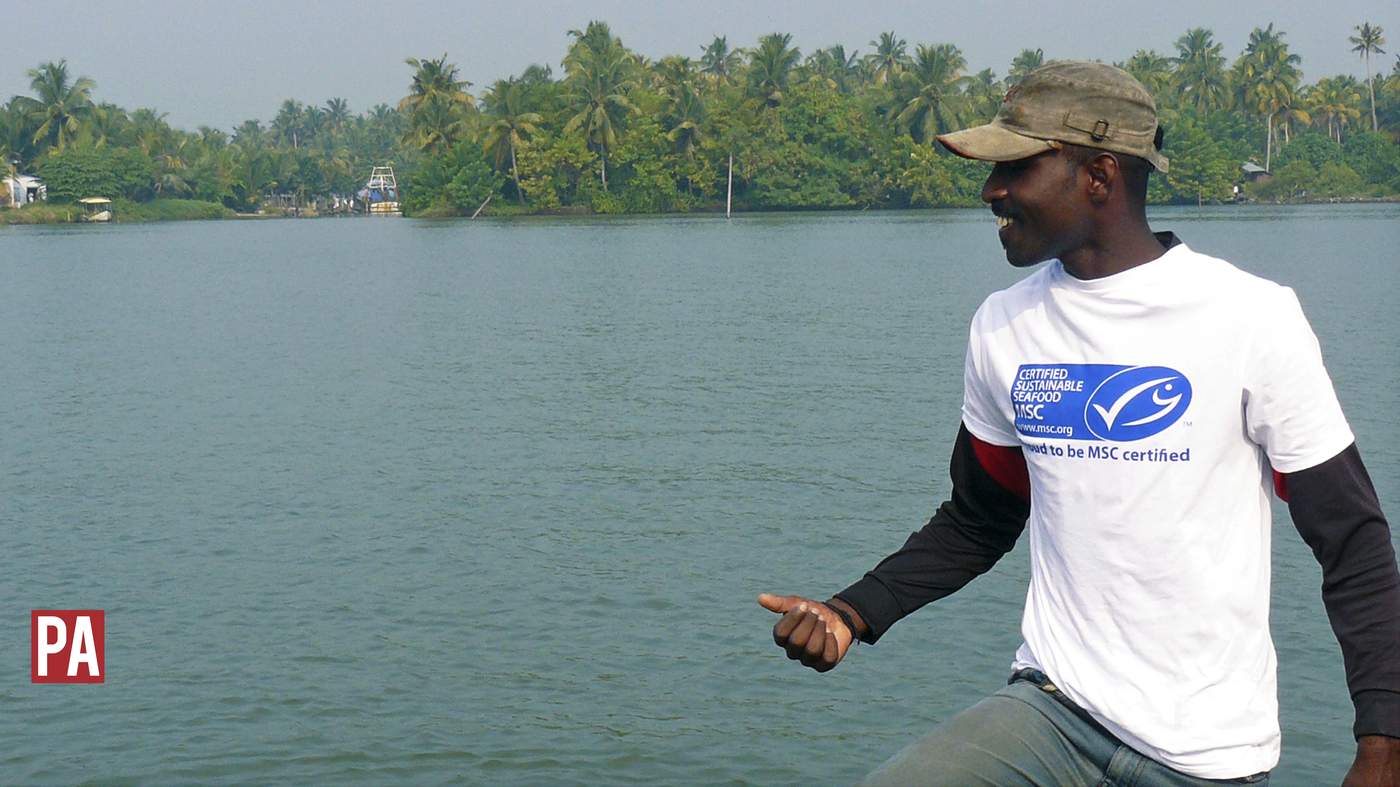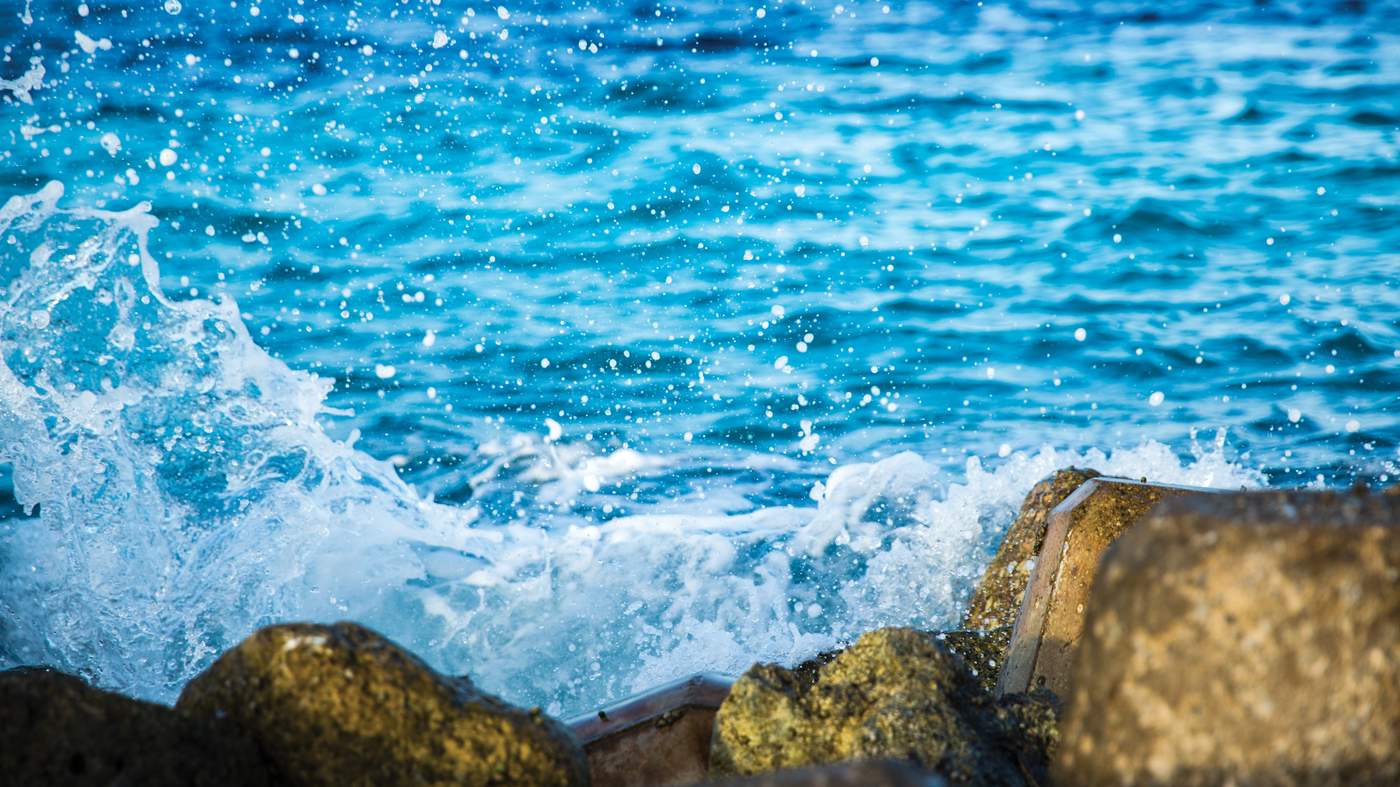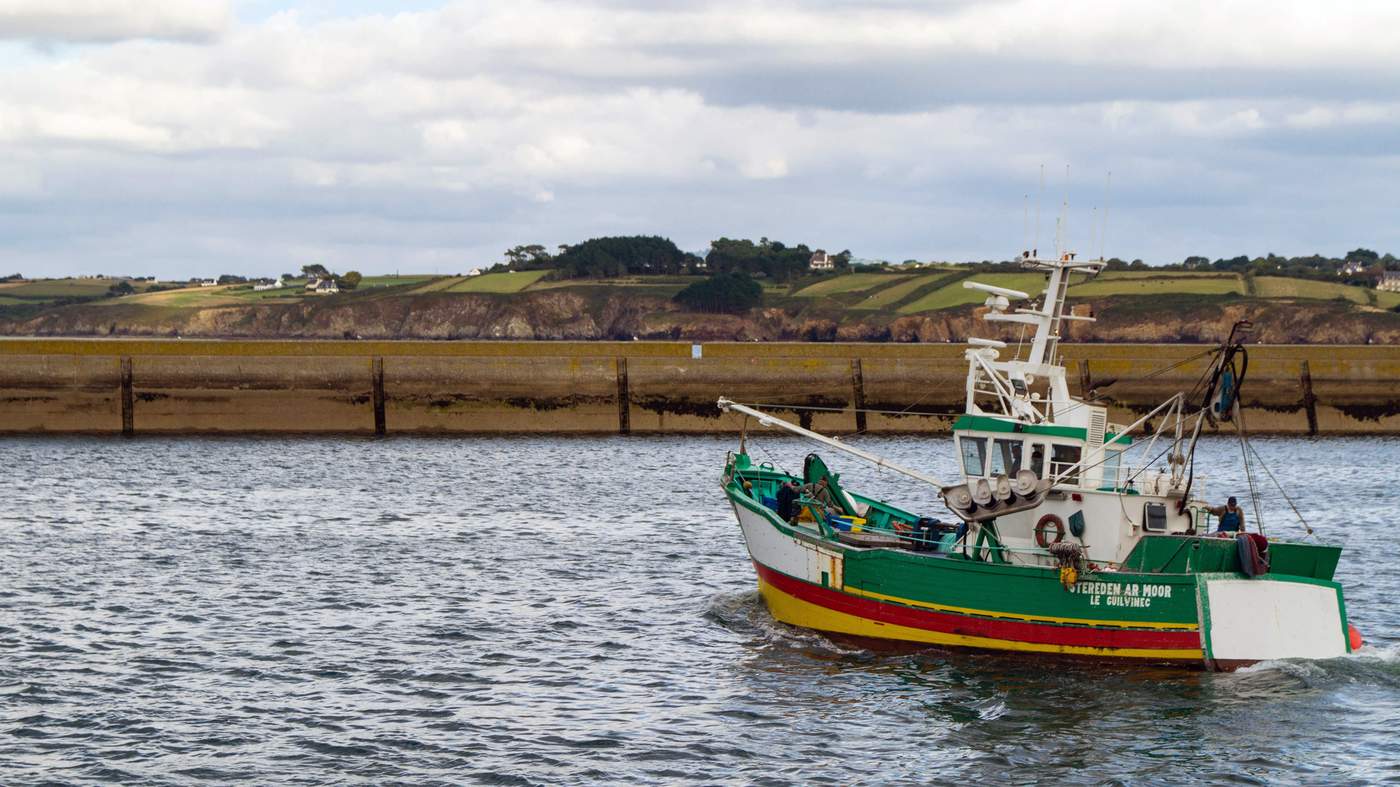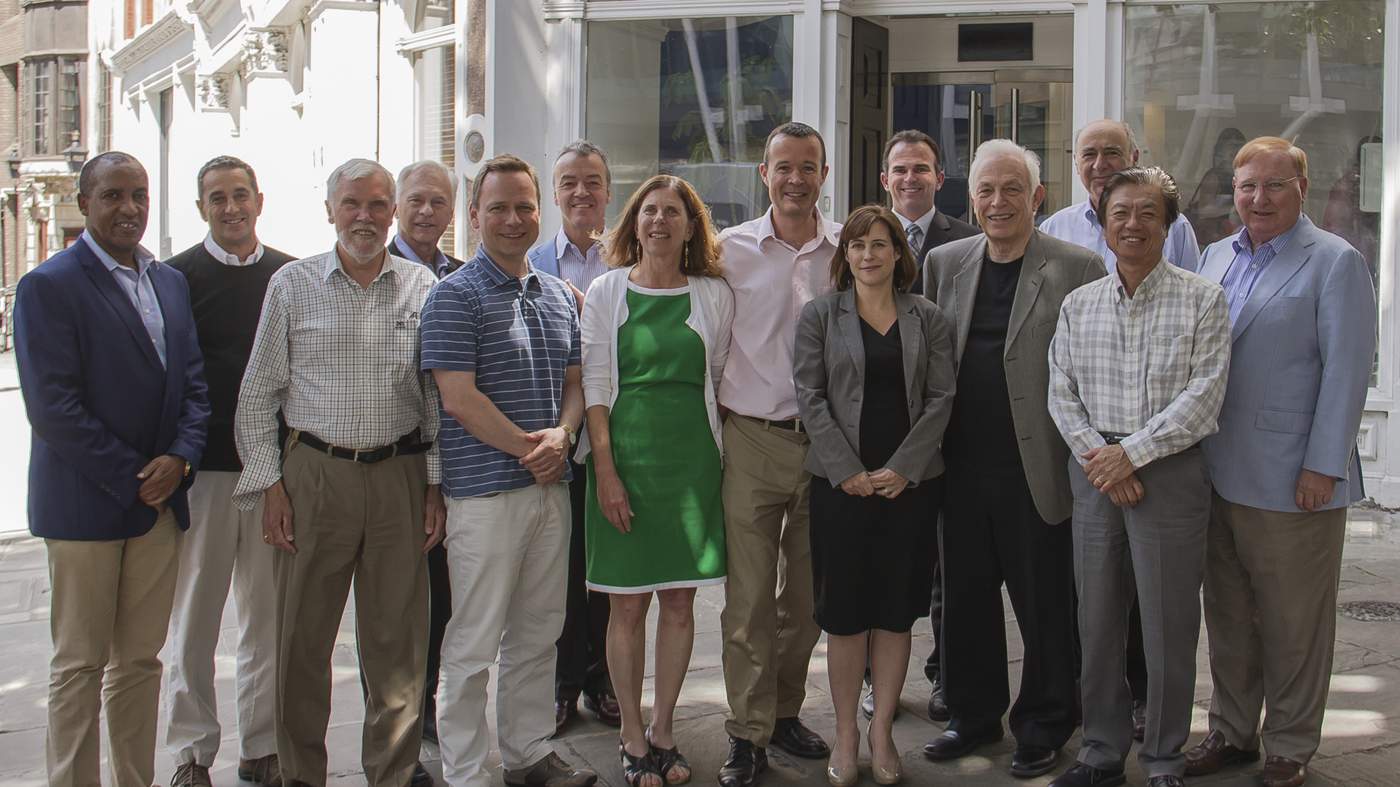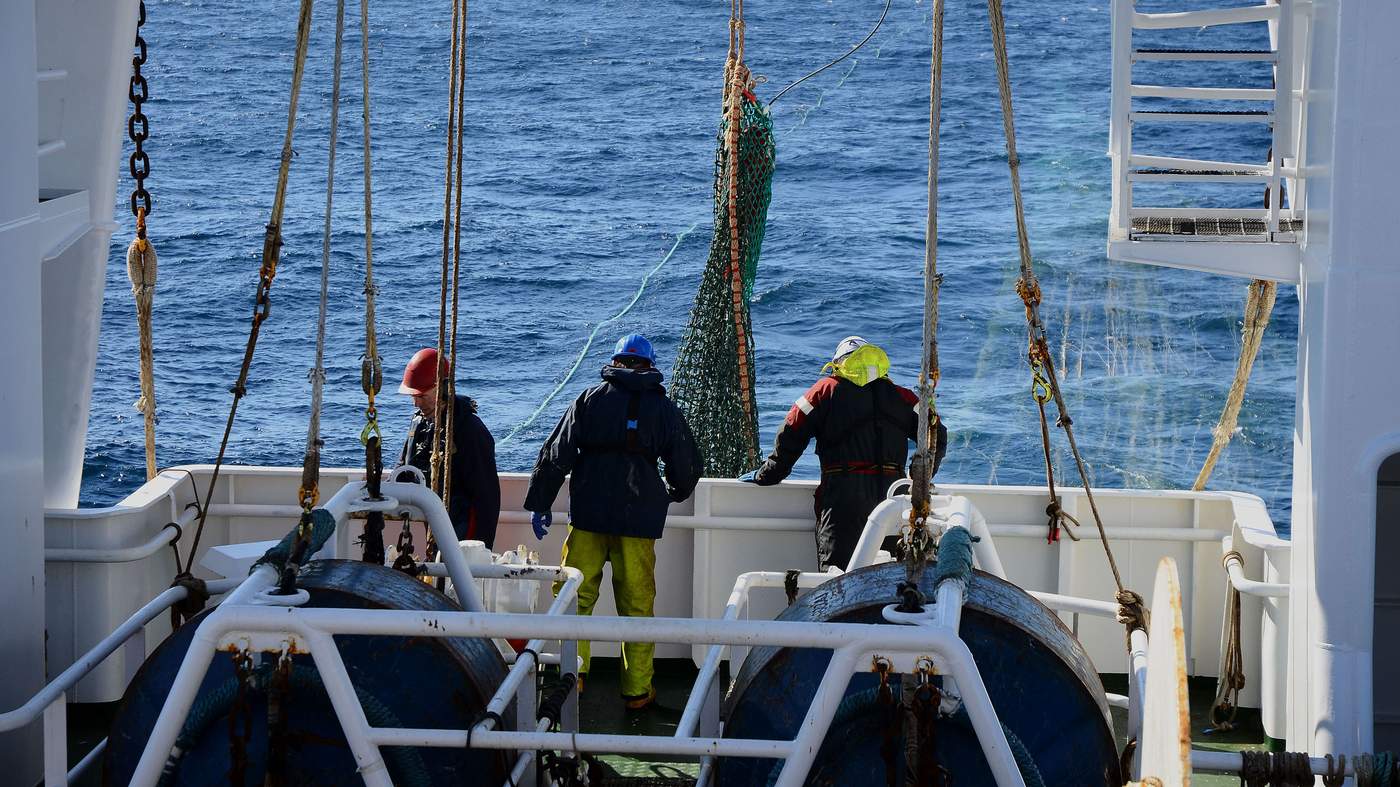The sustainable seafood movement has made great strides in the last 20 years – but it wouldn’t have got off the ground without the passion and tenacity of a modest coalition of pioneering retailers, suppliers, scientists,
campaigners and philanthropists.
Here, in a specially commissioned history, writers from the UK Press Association tell the story of the MSC’s first 20 years – the highs and lows, the controversies and the breakthroughs – and look ahead to the future of the world’s oceans…
Declaration of independence
To carry out the job it had set itself, the MSC had first to establish its autonomy from industry and conservation organisations – and to set itself apart from its parents.
‘As with any joint venture of “suits and sandals”, there was affection and tension,’ comments research associate George Radler, in an award-winning paper prepared with Professor Ulrich Steger on the MSC’s transition to independence. ‘Some critics were concerned about premature independence, while others felt that the MSC would never become completely independent.’
Radler and Steger quote an unnamed Unilever manager: ‘Although Unilever was quite a large player in the fish market, we realised that other players had to buy into the MSC. These companies were obviously not going to join the MSC if they considered it to be a “subsidiary” of Unilever.’ Both Unilever and WWF worked hard to separate their obvious interest in the success of the MSC from any perception of interference in the autonomy of its emerging role.
Early in 1996, management consultants Coopers & Lybrand (later merged into PricewaterhouseCoopers) were engaged to develop an organisational blueprint and implementation plan for the MSC. A project manager, Carl-Christian Schmidt, was appointed, along with a shadow Board of Directors.
Schmidt, with a background in fisheries policy and economics back to the 1970s, had worked with fisheries ministries and the OECD on the setting up of the Common Fisheries Policy. His new role meant liaising between two very different bodies. ‘It was a venture with two players that had different languages, different ways of coming to the game, very different ways of behaving,’ he recalls. ‘And my struggle was sitting between those two!’
The MSC was formally registered at Companies House London as a private company on February 17, 1997. This is a key milestone in the MSC’s history, the moment it ceased to be a project of WWF and Unilever and became an independent entity.
In 1998, John Selwyn Gummer, a former UK Minister for the Environment, took up office as the MSC’s first independent Chairman and an international board of trustees was recruited. At a time when many other environmental initiatives were foundering, it was an achievement even to have got this far.
A difficult adolescence
The very first MSC certified fisheries – Western Australia Rock Lobster and Thames herring – were certified in March 2000, after assessments that had begun in 1999. The first two labelled products hit the shops at the same time.
Whole Foods Markets in the US stocked the very first MSC product. ‘It was very expensive but we thought we really need to support this new program. We thought: Let’s just do it!’ says Margaret Wittenberg, former Global Vice President of Quality Standards at Whole Foods Market.
‘This was the first certified, sustainably managed fishery and so for us it was, “Hey we have something that’s certified! This is the start of showing that it can really work!” We did a lot of work on marketing and media awareness too, educating our customers and giving a message to the fishing industry that you’ll be rewarded in the marketplace if you practise good management.’
But the early years were not easy-going, and it would be two more years before MSC labelled products reached the 100 mark.
‘There was this expectation at the start that there would be this enormous uptake of people within the MSC program – that retailers would say, “Of course we’re going to buy sustainable fish and give 100% support to the MSC!”, and that fisheries would fall over themselves to enter into this third-party assessment methodology,’ says Rupert Howes. ‘But that didn’t happen because the market said: no market = no supply; no supply = no market. And fisheries didn’t race to come into the program because it was seen as a bit of a black box – complex, risky and quite costly. So the organisation got off to a rocky start in the first few years.’
Says Margaret Wittenberg: ‘At the outset retailers, including us, wanted more product in order for the MSC’s message to get out there. So it was frustrating – and yet it was also exciting being in the midst of all this as it was being developed. And gradually, as new fish became available – hoki, halibut, tuna, Chilean sea bass – we incorporated them into our offering.’
Resistance, however, came in many forms. Executives from the fishing industry wondered about the detailed steps of the certification process. How could catch be divided on board? Could certified fish really be clearly separated from non-certified, all the way from the dock to the retailer? What about operations that didn’t sign up to the scheme – would compliant fishers be forced to become whistle-blowers?
Some countries, meanwhile, had other ideas. Norway, Iceland, Denmark and Sweden formed a working group with the idea of developing a Nordic ecolabel for sustainable seafood. This idea never saw the light of day, but it did provide the impetus for the UN Food and Agriculture Organisation (UN FAO) to start discussions on guidelines for ecolabeling of seafood.
Lack of resources was an issue too. ‘A key challenge was the very small size of the organisation,’ recalls Jonathan Peacy, who was the MSC’s Fisheries Director during this period. ‘But this was overcome in part by the very strong support from individual scientists, fisheries managers and donors (See Deep Dive: Founding Funders), who between them believed in the potential of the MSC program and supported its development and implementation.’
Those days are remembered well by Volker Kuntzsch, now CEO of Sanford, the biggest seafood company in New Zealand, whose hoki fishery achieved MSC certification in 2001. Back in the 1990s, he was co-ordinating European fish-buying activities for Unilever. ‘I would go over to London to motivate the team. They were demoralised because things were just not happening. I made sure they understood that we were making progress – we just had to grit our teeth and we would get there.’
Getting with the program
On the fisheries side, the MSC initially looked to countries which already had a high bar on sustainability, like Norway, USA and Canada. The MSC also targeted Iceland, but here it took longer to convince people of the value of the MSC program. (See Deep Dive: The art of diplomacy)
From northern Europe and north America, the certifications would spread to southern Europe and then south-east Asia and developing countries around the world (see Deep Dive: Into Asia).
In 2003, Sainsbury’s began funding a three-year project to investigate the management of tuna fisheries;the first one to be certified, AAFA Pacific albacore, entered into assessment in 2005 and was certified two years later. Fisheries from Japan and Norway entered assessment for the first time in 2005. That same year, Alaska pollock, the world’s largest whitefish fishery, was certified, while the UK’s Thames herring fishery became the first ever fishery to renew its certificate.
‘For me the certification of the Alaskan pollock fishery was a real game-changer, because suddenly millions of tons of sustainable white fish were being delivered to the market,’ recalls Rupert Howes. ‘That meant at last that we’d overcome the obstacle of no supply to provide growing market demand.’
Over time, the mass-consumption species were joined by more niche species and more specialised products. Mexican Baja California red rock lobster became the first certified fishery in the developing world in 2004, while Oregon pink shrimp became the first certified shrimp fishery in 2007.
That same year also saw a fishery fail for the first time – the North Eastern Seas Fisheries lobster fishery, due to lack of data on stock levels. (See Deep Dive: Learning from failure)
‘We want fisheries to improve and we should recognise them when they do. Positive change means productive, healthy oceans.’
As a voluntary, open program, the MSC has not shied away from engaging with fisheries that some groups believe should never have been certified. (See Deep Dive: How the toothfish bounced back)
“As we understand more about the impacts of fishing, more fishing operations are changing for the better. They’re recovering their fish stocks, reducing their impacts and putting better management in place. That means that some fisheries with bad reputations are becoming sustainable,’ says Pat Caleo, MSC’s Asia Pacific Director. ‘We want fisheries to improve and we should recognise them when they do. Positive change means productive, healthy oceans.’
Growing together
By 2008 there were 100 fisheries in the program (either in assessment or certified) – among them the first certified fisheries from Norway, Germany, Canada and Japan. And thanks to its many supporters and partners, interest in the program from responsible fishers around the world was starting to show remarkable growth.
It was a significant moment when Japan came on board. Fish is a national obsession for the Japanese, who consume 10% of the world’s entire supply, so it was a real boost when, in 2006, MSC labelled fish went on sale in Japan for the first time, in Tokyo’s National Azabu supermarkets. Shortly after, national chain Aeon launched a range of MSC labelled products too. More recently, funding from the Packard Foundation has helped the MSC to scale up its operations in the country too.
The global uptake continued. In 2009, the Vietnamese Ben Tre clam fishery became the first in South-east Asia to receive MSC certification. (See Deep Dive: Getting the national vote) Initially a small-scale and domestic operation, it could now begin exporting its products to higher-value markets in Europe and North America, which has led to an increase in the prices it can charge at the quayside.
The Suriname Atlantic seabob shrimp fishery became the first certified tropical shrimp fishery in 2011, while the Ashtamudi clam fishery became the first fishery in India to be MSC certified in 2014.
Back in Europe, meanwhile, the first ever Spanish certified fishery – Pescafria-Pesquera Rodriguez, fishing Barents Sea cod –came on board in 2012. The European program saw an increase of over 50% in fisheries participation in the MSC program between 2012 and 2017. Iceland and Denmark set 100% MSC targets for their national industries, and have both made serious progress. The first Finnish fishery entered assessment in 2017.
Progress wasn’t always straightforward though. ‘In India there was initially concern from many key stakeholders about what the impact of certification might be on them as one of the top exporters of seafood,’ says Dr Yemi Oloruntuyi, Head of the MSC’s Developing World Program. Continuous engagement with MSC and support from WWF in India, however, eventually helped the Ashtamudi fishery to certification.
2015 saw two more milestones. The Australia pearl oyster fishery became the first of its kind to enter MSC assessment. And the Zoneco scallop fishery in Zhangzidao became the first-ever certified fishery in China, followed next year by China Southern Fishing (Shenzhen) Co Ltd (CSFC), a longline Albacore tuna fishery. ‘We will continue to support the rest of China’s sustainable seafood movement as it embarks on this journey,’ says Samuel Chou, President of CSFC.
A key strand of the MSC’s work in recent years has been supporting improvements in small-scale and developing world fisheries. These have historically been under-represented in the program, even though of the 120 million people employed in fishing, 90% work in small-scale fisheries, and almost all of these workers live in developing countries. (See Deep Dive: making small sustainable)
‘The MSC plays an important role in getting the sustainability dialogue on the table at various levels – with the market, with the fishing industry, and in and around management discussions around fisheries globally,’ says Christine Penney of Clearwater Seafoods. ‘It sets a high bar of sustainability, and there are still a number of global fisheries that aren’t likely to be able to achieve that level in the short term,so that is both a challenge and an opportunity. The MSC has created the incentive for those fisheries to make improvements and to evolve towards the Standard.’
Share this story:

